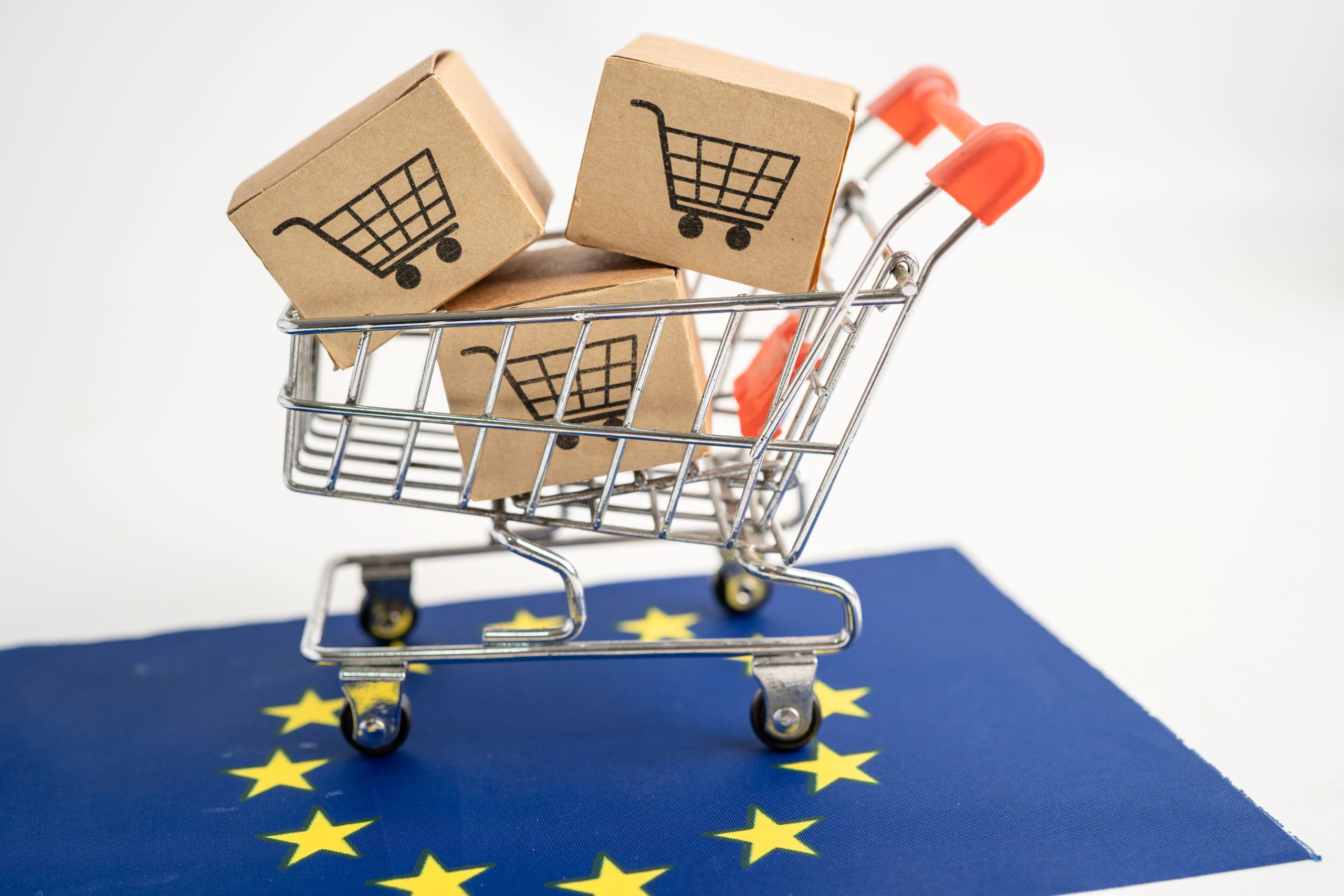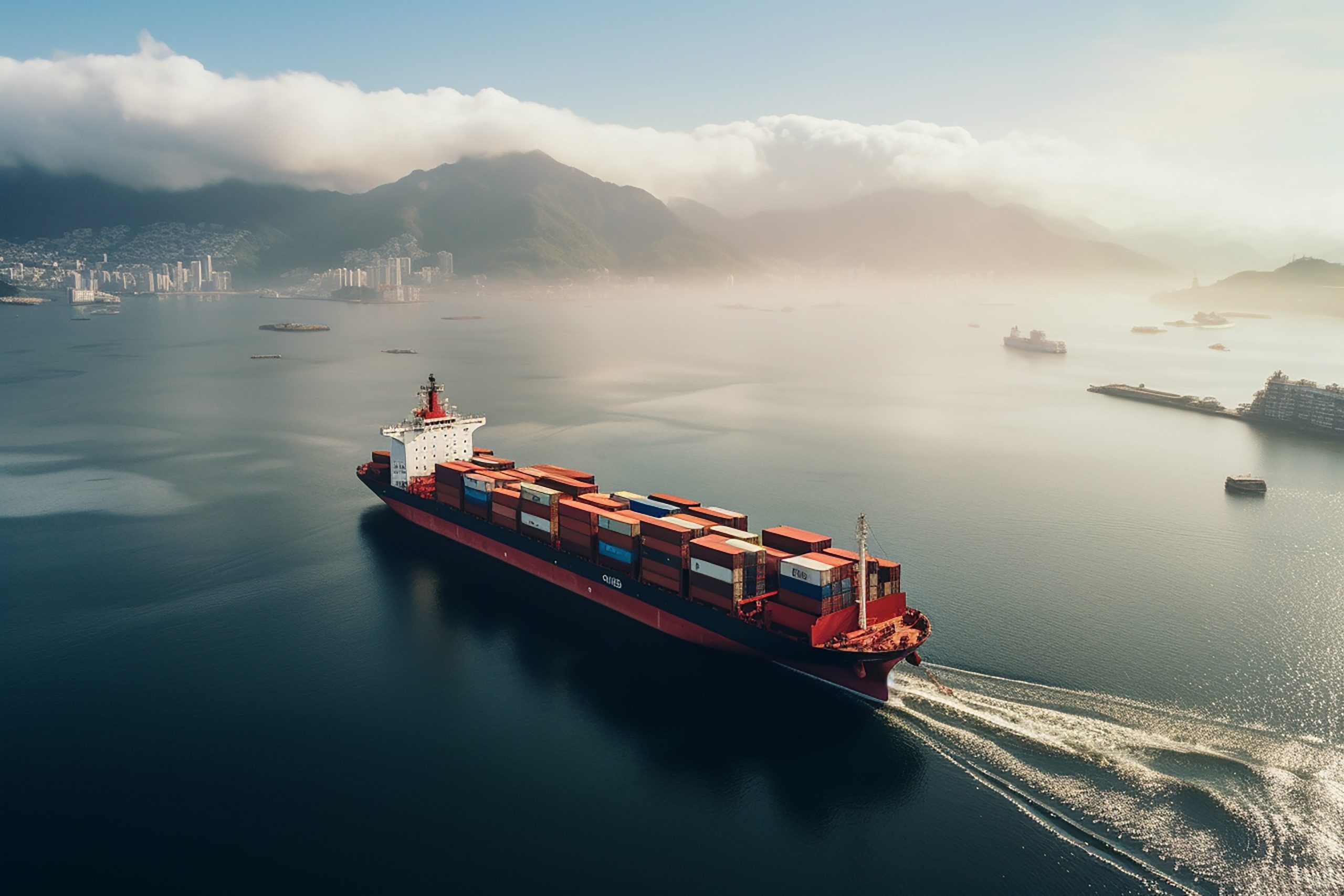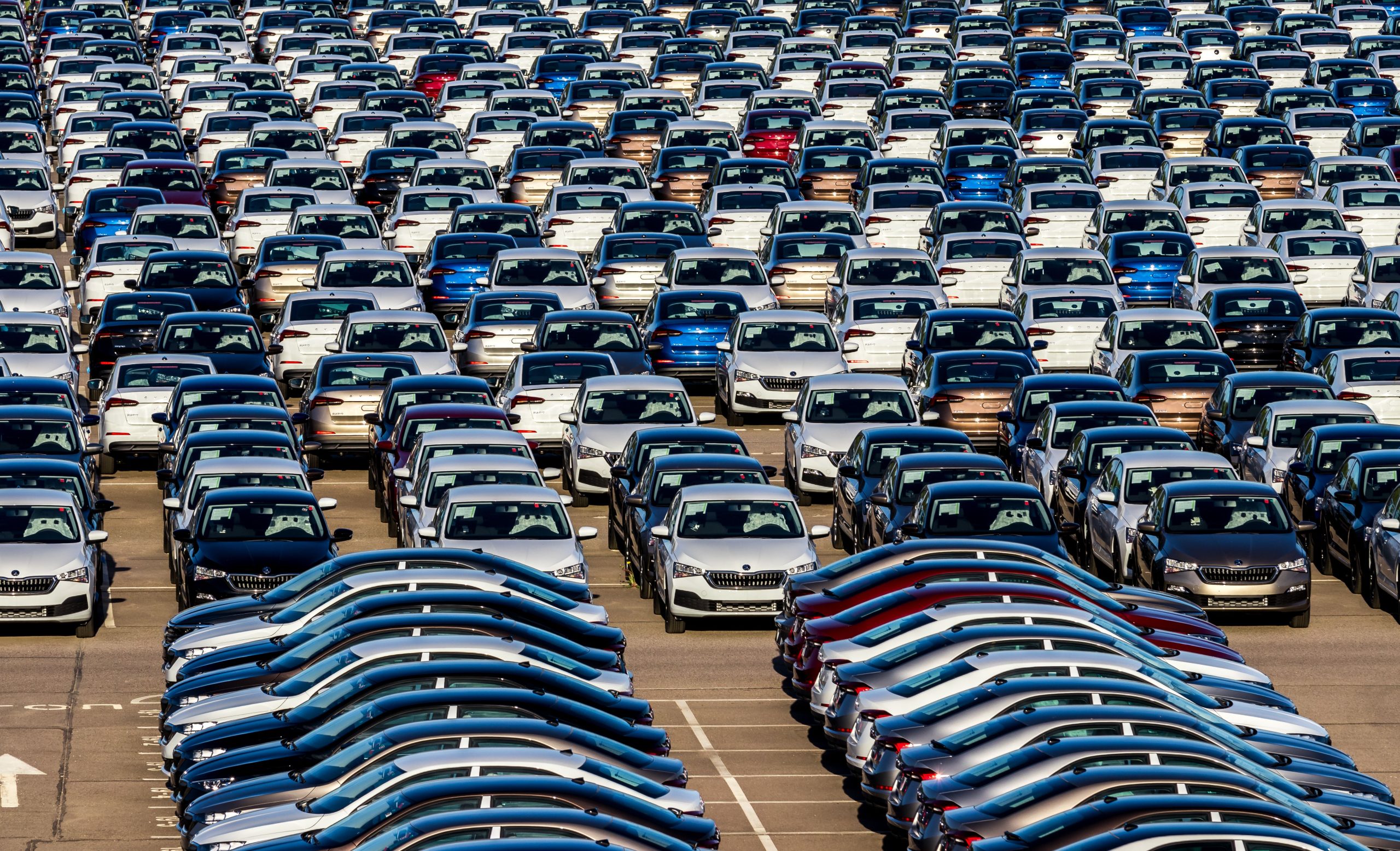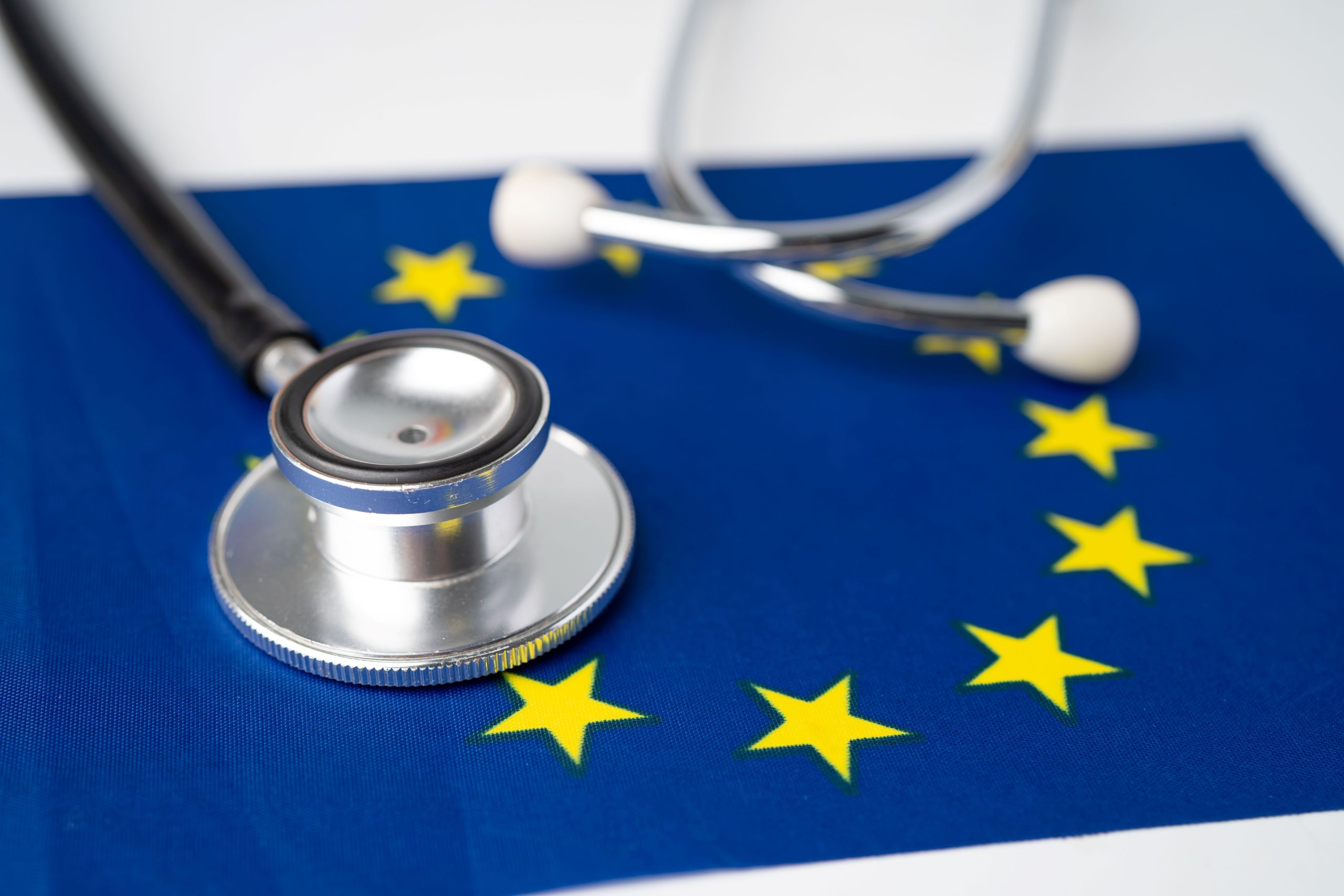Did you know that the European Union (EU) accounts for about 16% of the world’s trade in goods, making it one of the largest trading blocs globally?
With its extensive network of trade agreements and regulatory policies, the EU plays a pivotal role in shaping global trade dynamics.
In this article, we will delve into the current trade policies of the European Union and examine their far-reaching implications for international trade and businesses worldwide.
From the intricacies of the Single Market and Customs Union to the impacts of regulatory standards and trade agreements, we’ll explore how these policies influence market access, competitive advantages, and trade barriers for businesses across various sectors.
Overview of the European Union’s Trade Policies

Brief History
The European Union’s trade policies have evolved significantly since the establishment of the European Economic Community (EEC) in 1957. The Treaty of Rome laid the foundation for a customs union among the member states, eliminating internal tariffs and establishing a common external tariff.
Over the decades, the EU expanded its membership and trade policy scope, negotiating numerous trade agreements and becoming a key player in the World Trade Organization (WTO). The creation of the Single Market in 1993 further integrated member states’ economies, allowing for the free movement of goods, services, capital, and labor.
Current Policies
Today, the EU’s trade policies are characterized by a mix of bilateral, regional, and multilateral agreements. Key policies include:
- The Single Market and Customs Union: Ensuring seamless trade among member states without customs duties or border checks.
- Common Commercial Policy: A unified external trade policy that includes tariffs, trade agreements, and trade defense measures like anti-dumping duties.
- Trade Agreements: Comprehensive agreements with countries and regions worldwide, such as the Comprehensive Economic and Trade Agreement (CETA) with Canada, and the Economic Partnership Agreements (EPAs) with African, Caribbean, and Pacific countries.
- Regulatory Standards: High standards for product safety, environmental protection, and labor rights, which trade partners must meet to access the EU market.
- Digital Trade Policies: Regulations and frameworks governing digital services and e-commerce.
Strategic Goals
The main strategic goals of the EU’s trade policies are:
- Promote Economic Growth and Job Creation: By fostering an open and competitive market environment both within the EU and globally.
- Enhance Market Access: Negotiating trade agreements to open new markets for EU businesses and reduce trade barriers.
- Maintain High Standards: Ensuring that trade partners adhere to the EU’s stringent regulatory standards on safety, environment, and labor.
- Support Sustainable Development: Integrating sustainable development goals into trade agreements to promote environmental protection and social progress.
- Strengthen Global Trade System: Actively participating in the WTO to ensure a rules-based international trade system.
- Digital Transformation: Supporting the growth of digital trade and ensuring data protection and cybersecurity in global commerce.
Through these strategic goals, the EU aims to remain a central player in global trade, promoting a stable and prosperous international trading environment.
The Single Market and Customs Union
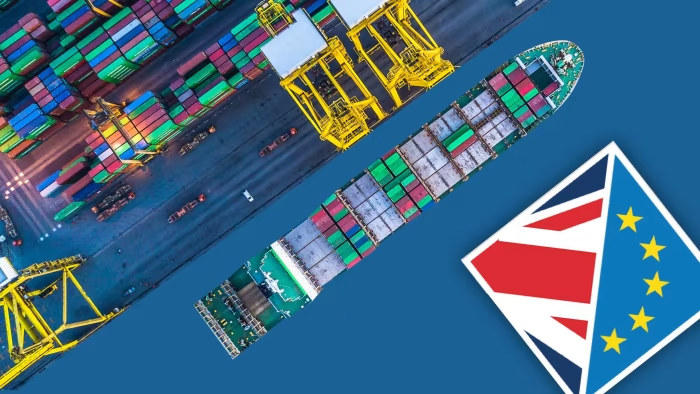
Single Market
The Single Market is one of the European Union’s most significant achievements, aimed at creating a seamless internal market among its member states.
Established in 1993, it allows for the free movement of goods, services, capital, and people. This integration enables businesses to operate as efficiently across national borders within the EU as they would within their own country.
Benefits for Member States:
- Economic Growth: The elimination of trade barriers boosts economic growth by increasing competition and efficiency.
- Consumer Choice: Consumers benefit from a wider range of goods and services at competitive prices.
- Innovation: Increased competition drives innovation as businesses strive to differentiate themselves.
- Labor Mobility: Workers can move freely across borders, leading to better job matches and reduced unemployment.
Benefits for International Businesses:
- Market Access: Non-EU companies that establish a presence in any member state gain access to the entire EU market, encompassing over 450 million consumers.
- Regulatory Consistency: Harmonized regulations across member states simplify compliance for businesses.
- Economies of Scale: Companies can achieve economies of scale by operating within a large, unified market.
Customs Union
The Customs Union, a cornerstone of the EU since its early days, complements the Single Market by allowing goods to move freely among member states without customs checks or duties.
It establishes a common external tariff for imports from non-EU countries, meaning that once goods enter the EU, they can circulate freely without additional customs duties.
Role in Facilitating Trade:
- Elimination of Internal Tariffs: Goods move seamlessly across member state borders, reducing costs and delays associated with customs checks.
- Common External Tariff: A single tariff system simplifies trade relations with non-EU countries and ensures uniformity in trade practices.
- Trade Negotiations: The EU negotiates trade agreements as a single entity, providing greater bargaining power and consistency in external trade policies.
- Simplified Procedures: Streamlined customs procedures and mutual recognition of standards make it easier for businesses to trade within the EU.
Trade Agreements and Partnerships

Bilateral and Multilateral Agreements
The European Union actively engages in negotiating trade agreements with countries and regions around the world to promote economic growth, enhance market access, and secure a stable trading environment. These agreements can be bilateral (between the EU and a single country) or multilateral (involving multiple countries or regions).
Key Trade Agreements
- Comprehensive Economic and Trade Agreement (CETA): Between the EU and Canada, CETA aims to reduce or eliminate tariffs on most goods and services, enhance market access, and improve investment conditions.
- Economic Partnership Agreements (EPAs): With African, Caribbean, and Pacific (ACP) countries, these agreements focus on development cooperation, trade facilitation, and promoting regional integration.
- EU-Japan Economic Partnership Agreement: This agreement covers a wide range of areas including tariffs, non-tariff barriers, services, and investment, aiming to boost trade and investment between the EU and Japan.
- EU-South Korea Free Trade Agreement: This is one of the EU’s most ambitious and comprehensive trade agreements, covering not only goods and services but also intellectual property rights, public procurement, and sustainable development.
- Mercosur Agreement: A trade agreement with the Mercosur bloc (Argentina, Brazil, Paraguay, and Uruguay) intended to promote trade and investment by reducing tariffs and non-tariff barriers.
Case Studies
- Comprehensive Economic and Trade Agreement (CETA) with Canada
Since its provisional application in 2017, CETA has significantly impacted trade between the EU and Canada. Tariff elimination on 98% of products has led to an increase in bilateral trade.
For instance, EU exports to Canada of machinery and mechanical appliances rose by over 8%, while Canadian exports of pharmaceutical products to the EU increased by 10%.
Small and medium-sized enterprises (SMEs) on both sides have benefited from reduced barriers and improved market access.
- Economic Partnership Agreements (EPAs) with ACP Countries
EPAs aim to foster trade and development in ACP countries.
For example, the EPA between the EU and the East African Community (EAC) has facilitated better access for EAC agricultural products to the EU market, resulting in increased exports of coffee, tea, and horticultural products.
These agreements also support regional integration and development in ACP countries by providing technical assistance and capacity-building initiatives.
- EU-South Korea Free Trade Agreement
Implemented in 2011, the EU-South Korea FTA has led to a substantial increase in trade.
EU exports to South Korea grew by over 50%, with significant gains in sectors such as automobiles, machinery, and pharmaceuticals. South Korean exports to the EU also increased, particularly in electronics and automotive parts.
The agreement has been praised for its comprehensive coverage, including provisions on sustainable development and intellectual property rights.
- EU-Japan Economic Partnership Agreement
The EU-Japan EPA, which came into force in 2019, has created a significant positive impact on trade flows.
EU exports of agricultural products, such as wine and cheese, to Japan have seen substantial growth due to reduced tariffs. Conversely, Japanese exports of automobiles and parts to the EU have increased, benefiting from streamlined regulatory processes.
The agreement also promotes cooperation in areas like data protection and sustainable development.
Regulatory Policies and Standards
Regulatory Framework
The European Union (EU) has established a comprehensive regulatory framework that governs trade within its member states and with international partners.
This framework ensures high standards for product safety, environmental protection, and labor rights, maintaining the EU’s commitment to protecting consumers and promoting fair competition.
Key Components of the Regulatory Framework
- Product Standards and Safety: The EU sets rigorous standards for product quality and safety, covering a wide range of goods from electronics to pharmaceuticals. These standards ensure that products sold in the EU market are safe for consumers and meet specific quality benchmarks.
- Environmental Regulations: The EU is a global leader in environmental protection, implementing policies such as the REACH (Registration, Evaluation, Authorization, and Restriction of Chemicals) regulation, which controls the use of hazardous substances. The EU also enforces strict regulations on emissions and waste management.
- Labor and Social Standards: Regulations ensure fair labor practices, including minimum wage requirements, health and safety standards, and anti-discrimination laws. The EU promotes social responsibility among businesses, encouraging ethical labor practices.
- Digital and Data Protection Regulations: The General Data Protection Regulation (GDPR) sets high standards for data protection and privacy, impacting how businesses handle personal data.
- Customs and Trade Facilitation: The EU Customs Code simplifies and harmonizes customs procedures, facilitating smoother trade flows and reducing administrative burdens.
Impact on International Businesses
The EU’s regulatory policies and standards significantly affect non-EU businesses that wish to trade with or operate within the EU. These regulations present both challenges and opportunities for international businesses.
Challenges
- Compliance Costs: Meeting the EU’s stringent standards can be costly for non-EU businesses. Companies may need to invest in new technologies, modify their products, or alter their production processes to comply with EU regulations.
- Complexity of Regulations: The comprehensive and detailed nature of EU regulations can be challenging to navigate, especially for small and medium-sized enterprises (SMEs) with limited resources.
- Market Access Barriers: Non-compliance with EU standards can result in products being denied access to the EU market, leading to potential revenue losses and market share reductions.
Opportunities
- Market Credibility: Complying with EU standards can enhance a company’s reputation for quality and safety, boosting consumer confidence and opening up new market opportunities both within the EU and globally.
- Competitive Advantage: Businesses that successfully meet EU standards can leverage this compliance as a competitive advantage, distinguishing themselves from competitors who may struggle with regulatory requirements.
- Innovation and Improvement: The need to meet high regulatory standards can drive innovation and improvements in product quality, environmental sustainability, and labor practices, benefiting businesses in the long run.
Case Examples
- Automotive Industry: International car manufacturers must comply with the EU’s stringent emissions standards and safety regulations. Companies that adapt to these standards often find it easier to market their vehicles in other regions with similar regulations, such as the US and Japan.
- Technology Sector: Tech companies must adhere to the GDPR, which has set a global benchmark for data protection. Compliance with GDPR not only ensures access to the EU market but also improves the company’s data handling practices worldwide.
- Food and Beverage Industry: Non-EU food producers must meet the EU’s food safety and labeling regulations. Those that do can capitalize on the EU’s large consumer base, known for its high demand for quality and safe food products.
Implications for International Trade
Market Access
The European Union’s (EU) policies play a crucial role in determining how easily foreign businesses can access its market. The EU, as a significant global trading bloc, has established a range of policies that both facilitate and restrict market access for non-EU businesses.
How EU Policies Affect Market Access
- Harmonized Standards: The EU’s harmonized standards for products mean that once a product meets these requirements, it can be sold across all member states without additional modifications. This simplifies market entry for foreign businesses.
- Trade Agreements: Bilateral and multilateral trade agreements reduce tariffs and non-tariff barriers, making it easier for foreign businesses to export to the EU. For example, agreements like CETA with Canada and the EU-Japan Economic Partnership Agreement significantly enhance market access.
- Regulatory Compliance: To access the EU market, foreign businesses must comply with strict regulatory standards on product safety, environmental protection, and labor practices. While these standards ensure high-quality products, they can also pose entry barriers for companies not yet compliant.
- Customs Procedures: Simplified customs procedures under the EU Customs Code facilitate smoother and faster trade flows, benefiting foreign businesses by reducing delays and administrative burdens.
Competitive Advantage
EU policies can create both competitive advantages and disadvantages for international businesses.
Advantages
- Quality Assurance: Compliance with the EU’s high standards for quality and safety can serve as a mark of excellence, boosting consumer trust and brand reputation.
- Market Expansion: Access to the EU’s Single Market allows businesses to reach over 450 million consumers, providing significant growth opportunities.
- Innovation Incentives: The EU’s stringent regulations often drive innovation, encouraging businesses to develop superior products and sustainable practices.
Disadvantages
- Compliance Costs: Meeting the EU’s regulatory standards can be expensive, requiring substantial investments in technology, processes, and quality assurance.
- Regulatory Complexity: Navigating the EU’s complex regulatory environment can be challenging, especially for small and medium-sized enterprises (SMEs).
- Competitive Pressure: The high level of competition within the EU market can be daunting for new entrants, especially those that cannot match the efficiency and innovation of established European businesses.
Trade Barriers
Despite the EU’s efforts to facilitate trade, certain barriers can still impact global trade dynamics.
Types of Trade Barriers
- Tariffs: While many tariffs have been reduced or eliminated through trade agreements, some sectors still face tariffs, particularly in agriculture and certain industrial products.
- Non-Tariff Barriers: These include quotas, import licenses, and complex regulatory requirements. For example, the EU’s sanitary and phytosanitary (SPS) measures can be stringent, affecting agricultural imports.
- Technical Barriers to Trade (TBT): Standards and technical regulations can act as barriers if they differ significantly from those in other countries, requiring foreign businesses to adapt their products accordingly.
- Anti-Dumping and Countervailing Duties: The EU imposes these duties to protect its industries from unfair competition, which can affect exporters accused of dumping products at unfairly low prices.
Impact on Global Trade
- Trade Diversion: Stringent standards and regulatory requirements may divert trade to other regions where entry barriers are lower.
- Market Segmentation: High compliance costs and technical barriers can segment the market, limiting participation to businesses capable of meeting the EU’s standards.
- Stimulating Improvements: On the positive side, the EU’s high standards often push global businesses to improve their products and practices, leading to overall enhancements in quality and sustainability in international trade.
Case Examples
- Agriculture: The EU’s Common Agricultural Policy (CAP) provides subsidies to EU farmers, creating an uneven playing field for non-EU agricultural exporters. However, those who comply with EU standards can access a lucrative market.
- Technology: Companies like Apple and Samsung comply with the EU’s RoHS (Restriction of Hazardous Substances) Directive, ensuring their electronic products meet environmental standards, thereby enhancing their global marketability.
- Pharmaceuticals: The EU’s rigorous approval process for pharmaceuticals ensures high safety standards. Companies that navigate this process successfully can use it as a benchmark to gain easier entry into other regulated markets.
Economic and Political Influences

Economic Factors
Economic conditions within the European Union (EU) profoundly influence its trade policies. Various economic indicators and trends shape how the EU formulates and adjusts its approach to international trade.
Economic Growth
Economic growth is a primary driver of trade policy. When the EU experiences robust economic growth, it tends to adopt more expansive trade policies, seeking to open new markets and secure advantageous trade agreements.
For example, during periods of economic prosperity, the EU may negotiate comprehensive trade deals, such as the EU-Japan Economic Partnership Agreement, to capitalize on its economic strength and promote further growth.
Inflation and Fiscal Policies
Inflation rates and fiscal policies also play critical roles in shaping trade policies. High inflation can lead the EU to modify import duties and tariffs to manage domestic price levels.
For instance, to combat inflation, the EU might reduce tariffs on essential goods to lower costs for consumers. Conversely, fiscal policies, including government spending and taxation, can either incentivize exports through subsidies or restrict imports to protect domestic industries.
During economic crises, fiscal policies may become more protectionist to safeguard local employment and production.
Employment Levels
Employment levels significantly impact trade policy decisions. High unemployment rates may prompt the EU to implement protective measures to secure jobs within key industries.
For example, during economic downturns, the EU might increase tariffs on imported goods to protect domestic manufacturers and preserve employment.
In contrast, low unemployment and labor shortages could lead to more open trade policies, encouraging foreign investment and the entry of skilled labor to address workforce gaps.
Political Dynamics
Political decisions and changes within the EU greatly influence its trade policies. The EU’s political landscape, characterized by the interplay of various institutions and member states, shapes its trade agenda and priorities.
European Commission and European Parliament
The European Commission, responsible for proposing and enforcing EU laws, plays a pivotal role in shaping trade policies.
It negotiates trade agreements on behalf of the EU and ensures that trade policies align with broader EU objectives.
The European Parliament, which has the power to approve or reject trade agreements, also influences trade policy through its legislative role and political debates.
Member State Interests
The diverse interests of EU member states can significantly impact trade policies.
Countries with strong export-oriented economies, like Germany, often advocate for more open trade policies, while those with vulnerable industries may push for protective measures.
The need to balance these differing interests can lead to complex negotiations and compromises within the EU’s decision-making process.
Political Changes and External Relations
Political changes within the EU, such as elections or shifts in government, can lead to significant changes in trade policy.
For example, a rise in populist or protectionist sentiment may result in more restrictive trade measures. Additionally, the EU’s external relations, including its stance towards major trading partners like the United States and China, are influenced by broader geopolitical dynamics and political alliances.
Brexit
The departure of the United Kingdom from the EU, commonly referred to as Brexit, has had profound implications for EU trade policies.
The EU had to renegotiate trade agreements with the UK and adjust its trade strategies to account for the loss of a major member state.
Brexit also prompted the EU to strengthen its internal cohesion and seek new trade partnerships to compensate for the economic impact of the UK’s departure.
Trade Disputes and Global Trade Environment
Trade disputes, both within the EU and with external partners, play a significant role in shaping trade policies.
The EU’s responses to trade disputes, such as imposing countervailing duties or seeking resolutions through the World Trade Organization (WTO), reflect its strategic priorities and commitment to a rules-based international trade system.
Additionally, global trade trends, such as the rise of digital trade and shifts in global supply chains, influence the EU’s trade policies and its approach to emerging trade challenges.
Case Studies of Specific Industries

Technology Sector
The technology sector in the European Union (EU) is heavily influenced by various EU policies, which aim to foster innovation, ensure fair competition, and protect consumer rights.
General Data Protection Regulation (GDPR)
The GDPR, implemented in 2018, has had a significant impact on tech companies operating within the EU.
This regulation strengthens data protection and privacy for all individuals within the EU, requiring companies to ensure higher standards of data security and to obtain explicit consent from users before collecting personal data.
While this has increased compliance costs for tech companies, it has also enhanced consumer trust and set a global benchmark for data protection.
Digital Single Market Strategy
The EU’s Digital Single Market (DSM) strategy aims to create a seamless online market across all member states. This includes removing barriers to cross-border e-commerce, improving digital infrastructure, and harmonizing regulations related to digital services.
For tech companies, this strategy offers opportunities to expand their market reach within the EU. However, it also necessitates adherence to a unified regulatory framework, which can be challenging for companies accustomed to varied national regulations.
Competition Policies
The EU is known for its stringent competition policies, which aim to prevent monopolistic practices and promote fair competition. High-profile cases include the EU’s antitrust actions against major tech companies like Google, Apple, and Amazon.
These actions have resulted in substantial fines and mandates to change business practices. For instance, Google was fined €4.34 billion in 2018 for abusing its market dominance with Android, and the EU required changes to its business model to ensure fair competition.
Agriculture
EU agricultural policies, particularly the Common Agricultural Policy (CAP), significantly influence international trade in agricultural products.
Common Agricultural Policy (CAP)
The CAP provides subsidies and financial support to EU farmers, aiming to ensure a stable supply of affordable food, support rural development, and maintain sustainable agricultural practices.
However, CAP has been criticized for distorting international trade by making EU agricultural products artificially competitive on the global market.
Non-EU countries, especially developing nations, argue that CAP subsidies disadvantage their farmers who cannot compete with subsidized EU products.
Trade Agreements and Agricultural Imports
The EU negotiates trade agreements that impact the agricultural sector. For instance, the EU-Mercosur trade agreement aims to reduce tariffs on agricultural products from South American countries.
While this opens up the EU market to more competitive agricultural imports, it also poses challenges for EU farmers who face increased competition. Balancing these trade agreements with the protection of local agricultural interests remains a complex issue for EU policymakers.
Food Safety and Environmental Standards
The EU maintains high food safety and environmental standards, which affect agricultural trade. Imported agricultural products must meet these stringent standards, impacting international exporters who need to comply with EU regulations.
This includes regulations on genetically modified organisms (GMOs), pesticide residues, and animal welfare standards. While these standards ensure the safety and quality of food products, they can also act as trade barriers for countries with different regulatory frameworks.
Automotive Industry
The automotive industry in the EU is a significant sector that is influenced by various policies and regulations, affecting both domestic manufacturers and international car makers.
Emission Standards
The EU has some of the world’s strictest emission standards for vehicles. Regulations such as the Euro 6 emission standard limit the amount of pollutants that vehicles can emit, pushing manufacturers to develop cleaner and more efficient engines.
The introduction of the Real Driving Emissions (RDE) test procedure has further tightened these standards. Compliance with these regulations requires significant investment in research and development for both EU and international manufacturers operating in the EU market.
Electric Vehicle (EV) Policies
To combat climate change and reduce dependency on fossil fuels, the EU has implemented policies to promote the adoption of electric vehicles (EVs). This includes incentives for EV purchases, funding for charging infrastructure, and research grants for EV technology.
These policies have accelerated the transition to electric mobility within the EU. However, they also pose challenges for traditional car manufacturers who need to adapt their production lines and invest in new technologies to stay competitive.
Trade Policies and Tariffs
The EU’s trade policies and tariffs impact the automotive industry significantly.
Trade agreements with countries like Japan (EU-Japan Economic Partnership Agreement) and South Korea (EU-Korea Free Trade Agreement) have reduced tariffs on cars and car parts, benefiting EU car manufacturers by opening up new markets.
However, trade disputes and tariff negotiations with major trading partners like the United States can create uncertainty and affect the industry’s global supply chains.
Brexit
Brexit has had a considerable impact on the automotive industry. The UK’s departure from the EU introduced new customs checks and trade barriers, disrupting the seamless supply chains that many automotive manufacturers relied on.
Companies like BMW, which operates plants in both the UK and EU, had to navigate these new complexities and adjust their logistics and production strategies to mitigate disruptions.
Challenges and Criticisms

Trade Disputes
Trade disputes are a significant aspect of international trade relations, and the European Union (EU) has been involved in several notable disputes in recent years.
EU-US Trade Disputes
Aircraft Subsidies (Boeing vs. Airbus)
The long-standing dispute between the EU and the US over subsidies provided to their respective aircraft manufacturers, Airbus and Boeing, culminated in significant rulings by the World Trade Organization (WTO).
Both parties were found to have provided illegal subsidies, leading to authorized retaliatory tariffs. The EU imposed tariffs on $4 billion worth of US goods in 2020, following US tariffs on $7.5 billion of EU products.
Steel and Aluminum Tariffs
In 2018, the US imposed tariffs on steel and aluminum imports, citing national security concerns. The EU retaliated with tariffs on US goods, including motorcycles, bourbon, and orange juice. This trade conflict highlighted the tensions over protectionist policies and their impact on global trade.
EU-China Trade Relations
Market Access and Intellectual Property
The EU has raised concerns over China’s practices regarding market access and intellectual property rights. The EU’s 2020 Comprehensive Agreement on Investment (CAI) with China aimed to address some of these issues, although it faced criticism for not going far enough in tackling unfair practices.
Anti-Dumping Measures
The EU has implemented anti-dumping duties on Chinese products, such as solar panels and steel, to protect its industries from unfair competition. These measures have often led to retaliatory actions from China, resulting in ongoing trade tensions.
EU-Russia Trade Disputes
Sanctions and Counter-Sanctions
Following Russia’s annexation of Crimea in 2014, the EU imposed economic sanctions on Russia, targeting its energy, finance, and defense sectors.
Russia responded with counter-sanctions, including a ban on food imports from the EU. These measures have strained trade relations and impacted industries on both sides.
Brexit-Related Trade Issues
Northern Ireland Protocol
The implementation of the Northern Ireland Protocol has caused significant trade disruptions between Great Britain and Northern Ireland.
The protocol aims to avoid a hard border on the island of Ireland but has created new customs checks and regulatory barriers, leading to tensions and ongoing negotiations between the EU and the UK.
Criticisms of EU Policies
The EU’s trade policies face several criticisms and challenges, both from within the Union and from external trading partners.
Internal Criticisms
Bureaucracy and Complexity
EU trade policies are often criticized for being overly bureaucratic and complex. The decision-making process involves multiple institutions, including the European Commission, the European Parliament, and member states, leading to slow and sometimes inefficient policy implementation.
Impact on Small Businesses
While large multinational corporations can navigate the complexities of EU trade policies, small and medium-sized enterprises (SMEs) often struggle. The regulatory burden and compliance costs can be disproportionately high for SMEs, limiting their ability to compete internationally.
Agricultural Policies
The Common Agricultural Policy (CAP) is frequently criticized for favoring large agribusinesses over small farmers and for its impact on global trade. Critics argue that CAP subsidies distort market prices and disadvantage farmers in developing countries.
External Criticisms
Protectionism
Some trading partners view the EU’s trade policies as protectionist.
Measures such as anti-dumping duties, agricultural subsidies, and stringent regulatory standards are seen as barriers to free trade.
For instance, the EU’s high standards for food safety and environmental protection are often viewed as non-tariff barriers that restrict imports.
Trade Negotiations and Agreements
The EU’s approach to trade negotiations has faced criticism for being slow and inflexible. The lengthy process of reaching consensus among member states can hinder the EU’s ability to respond swiftly to global trade developments.
Additionally, the EU’s insistence on including issues such as labor rights and environmental standards in trade agreements can complicate negotiations with countries that prioritize different aspects of trade.
Market Access and Reciprocity
There are ongoing concerns about the lack of reciprocity in market access.
While the EU advocates for open markets and free trade, some trading partners argue that the EU does not always reciprocate in providing market access.
This is particularly relevant in sectors like public procurement and services, where non-EU companies face significant barriers.
Sustainability and Ethical Concerns
The EU’s emphasis on sustainability and ethical standards in trade policies has also been a point of contention. While these standards aim to promote responsible trade practices, they can be challenging for developing countries to meet, potentially limiting their access to the EU market.
Geopolitical Challenges
The EU’s trade policies are also influenced by geopolitical considerations. Balancing economic interests with political and strategic goals can be challenging.
For example, the EU’s sanctions on Russia and trade tensions with the US and China reflect broader geopolitical dynamics that complicate trade relations.
Future Outlook

Policy Changes
As the global economic landscape evolves, the European Union (EU) is likely to adapt its trade policies to address emerging challenges and opportunities. Several potential changes are anticipated in the coming years:
Digital Trade and E-Commerce
The EU is expected to place greater emphasis on digital trade and e-commerce. This will involve updating regulations to address issues like data privacy, cybersecurity, and digital taxation. The Digital Services Act (DSA) and the Digital Markets Act (DMA) are already in progress and are likely to shape the EU’s approach to regulating digital markets.
Green Trade Policies
Environmental sustainability will continue to be a central theme in the EU’s trade policies. The European Green Deal aims to make Europe climate-neutral by 2050, which will impact trade through initiatives such as the Carbon Border Adjustment Mechanism (CBAM). This mechanism will impose tariffs on carbon-intensive imports to prevent carbon leakage and encourage global partners to adopt greener practices.
Strategic Autonomy
The concept of strategic autonomy, which emphasizes reducing dependence on external suppliers and enhancing self-sufficiency, is gaining traction. This may lead to policies aimed at fostering domestic industries, particularly in critical sectors such as semiconductors, pharmaceuticals, and green technologies.
Trade Agreements
The EU will likely pursue new trade agreements and update existing ones to reflect current economic realities. Negotiations with countries like India, Australia, and the Mercosur bloc are expected to continue, with a focus on securing market access, protecting intellectual property, and ensuring sustainable development.
Labor and Human Rights Standards
Future trade policies are expected to include stricter labor and human rights standards. The EU aims to promote fair labor practices and prevent human rights abuses in global supply chains. This will involve incorporating binding clauses in trade agreements and increasing monitoring and enforcement mechanisms.
Global Trade Trends
Several global trade trends are likely to influence EU policies in the coming years:
Shift towards Regionalization
There is a growing trend towards regionalization of trade, with countries focusing on strengthening economic ties within their regions. The EU may look to bolster its relationships with neighboring regions like Africa and the Middle East to enhance regional trade integration and economic cooperation.
Technological Advancements
Rapid advancements in technology, particularly in areas like artificial intelligence, blockchain, and 5G, will shape global trade. The EU will need to adapt its policies to harness these technologies for trade facilitation, supply chain management, and regulatory compliance.
Supply Chain Resilience
The COVID-19 pandemic highlighted vulnerabilities in global supply chains. The EU is likely to prioritize supply chain resilience by diversifying sources, increasing stockpiles of critical goods, and encouraging regional production networks.
Trade Tensions and Protectionism
Trade tensions and protectionist measures are expected to persist, particularly between major economies like the US and China. The EU will need to navigate these tensions carefully, balancing its economic interests with strategic alliances and geopolitical considerations.
Sustainable Development Goals (SDGs)
The alignment of trade policies with the United Nations Sustainable Development Goals (SDGs) will become increasingly important. The EU will likely focus on promoting inclusive and sustainable economic growth, reducing inequality, and ensuring responsible consumption and production patterns.
Strategic Recommendations for Businesses
Businesses operating within or trading with the EU should consider the following strategic recommendations to navigate the evolving trade environment:
Stay Informed on Regulatory Changes
Businesses should closely monitor changes in EU trade policies and regulations. Staying informed will enable them to anticipate and adapt to new requirements, such as environmental standards, digital regulations, and human rights clauses.
Invest in Sustainability
As the EU places greater emphasis on sustainability, businesses should invest in green technologies and sustainable practices. This includes reducing carbon footprints, enhancing energy efficiency, and ensuring compliance with environmental regulations.
Diversify Supply Chains
To mitigate risks associated with supply chain disruptions, businesses should diversify their sources and explore regional production networks. Building resilient supply chains will help manage uncertainties and maintain operational continuity.
Leverage Digital Technologies
Embracing digital technologies can enhance efficiency and competitiveness. Businesses should invest in digital tools for trade facilitation, supply chain management, and regulatory compliance. Leveraging technologies like blockchain can improve transparency and traceability in supply chains.
Engage in Policy Advocacy
Businesses should actively engage in policy advocacy through industry associations and trade organizations. This allows them to contribute to policy discussions, represent their interests, and influence the development of trade regulations.
Focus on Compliance and Ethics
Ensuring compliance with labor and human rights standards is crucial. Businesses should conduct thorough due diligence on their supply chains and implement robust compliance programs to avoid legal and reputational risks.
Prepare for Trade Disputes
Businesses should be prepared for potential trade disputes and protectionist measures. This includes understanding the implications of tariffs, trade barriers, and sanctions on their operations and developing strategies to mitigate their impact.
Key Takeaways
This article provided an in-depth examination of the European Union’s trade policies, highlighting the EU’s commitment to free trade, its extensive network of trade agreements, and its significant role in global trade.
We discussed the EU’s institutional framework, involving the European Commission, European Council, and European Parliament, which collectively shape trade policy.
Key trade agreements such as CETA with Canada and the EU-Japan Economic Partnership were outlined, along with major partnerships with the United States and China. The impact of specific trade policies and regulations, like the Common Agricultural Policy (CAP) and customs regulations, was also explored.
Economic and political influences on trade policies were examined, showcasing how internal conditions shape the EU’s external trade stance. Case studies from the technology, agriculture, and automotive sectors demonstrated the policies’ diverse impacts.
Challenges and criticisms were highlighted, including recent trade disputes and common criticisms of EU policies. Looking ahead, the article discussed potential policy changes, the influence of global trade trends, and provided strategic recommendations for businesses.
The future of EU trade policies will continue to evolve, maintaining high standards in labor, human rights, and environmental protection to remain competitive on the global stage.

